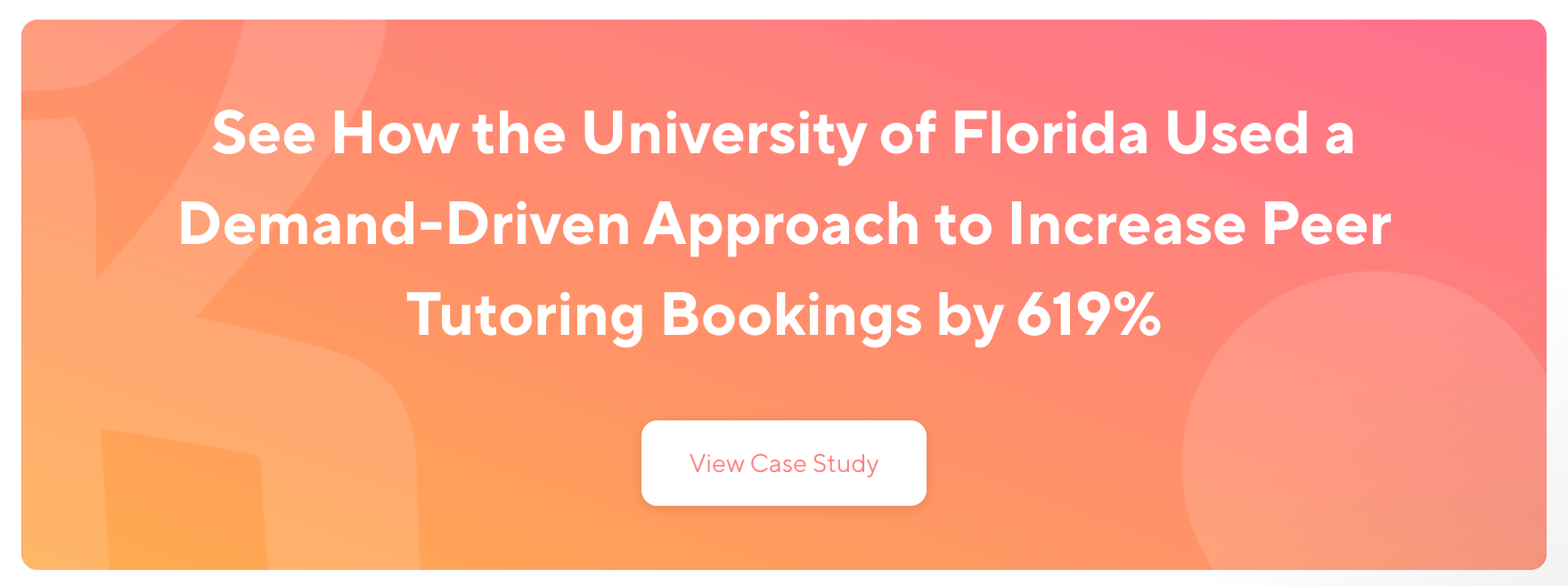Removing constraints in the student/tutor experience is a failsafe way to expand the reach and impact of this critical peer learning experience.
In a prior post, we explored how you can maximize peer learning by removing constraints. This is such an important value at Knack that we’ve decided to dedicate a whole series to exploring this topic. Part of the inspiration for this was also our recent “ease of use” post, since removing constraints inherently increases the ease of use of your program. With that, we decided to explore why letting students choose their tutor works.
In this post, we’ll consider why letting students choose the courses they need help in works too. Read on to learn why minimizing course constraints can benefit your students, and your program as a whole.
Creating a Better Way to Assess Demand
When students have the ability to ask for help in any course, you set the stage to truly understand the demand for support on your campus.
Tutoring centers may offer tutoring coverage in consultation with faculty to include high-DFW courses or they may invite students to tutor in subjects in which they want to help their peers. Each of these add value and are important to consider. In fact, it’s what we would recommend. However, these stop short of understanding the complete landscape of tutoring needs on your campus.
For example, you don’t see demand for courses where you don’t have tutor coverage. Without letting students choose what courses they need help in, you miss this chance to make visible demand across the board — not just in courses where you have support. In this way, a demand-driven model offers some benefits that a traditional staffing approach may not be able to provide.
Of course, using traditional methods, it would be impossible to hire tutors for all courses at an institution and wait and see what demand is generated. Rather, a flexible model of tutoring is best-suited for this modern approach by allowing you to uncover student demand with no manual effort and enable peer tutors to step in wherever help is needed.
Ensuring You Leave No Student Behind
When you remove the constraint of only being able to ask for help in select courses, tutoring becomes more accessible to students. As a result, it helps ensure your academic support services leave no student behind.
Of course, just because students could ask for help in any course doesn’t mean help is readily available at that moment. However, it allows this demand to surface, which could have gone unnoticed. With the right tutoring technology, you can track success and help more students with the ability to automate more extensive and accurate data tracking.
With well-designed tutoring technology, you will be in a better position to let students choose courses they need help in, track this demand in a way that matters, and actually meet that need. With a demand-driven model of academic support, you can provide a fresh and efficient way to allow students’ needs to be addressed as they occur, which makes everything more streamlined and impactful for both students and tutors.
Encouraging Help-Seeking Behavior
Asking for help can be hard. By the time someone asks for help, they are likely in the action phase of the stages of change. To work through the previous stages and then finally be ready to ask for help only for it to be met with “we’ll let you know if help becomes available” can be anticlimactic. It can slow the momentum of a student now ready to get support and discourage them from seeking help in the future.
This can be critical during an academic semester since delays in receiving tutoring can mean the difference between struggling or succeeding at midterms or turning things around in time to do well on final exams.
When students know they can ask for help in any course and that their needs will actually be met, they will be more likely to ask for help. This can encourage students to seek help in multiple courses, as well, especially if they know they can ask for help in any course or know this kind of help is available. The less constrained this process is, with fewer limits and more flexibility, the more empowering it can be for students who are thinking about asking for the support they need.
How can Knack empower your students to ask for help in any course and help you efficiently respond to ever-changing student needs? Learn more at partner.joinknack.com.

